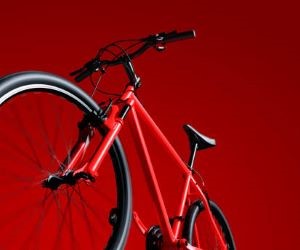Master endurance cycling in tropical climates with effective strategies. Learn hydration, heat adaptation, and training tips for peak performance.
HOW DO I TRAIN FOR SPRINT FINISHES?
Sprint finishes define some of cycling’s most exciting moments, from Tour de France stages to local criteriums. But behind the explosive 15-second effort is months of structured training, strength work, and tactical awareness. Sprinting requires raw power, fast-twitch muscle recruitment, and sharp timing in the pack. This article explores how to build the physical capacity, technical execution, and race craft needed to dominate sprint finishes. With the right mix of training drills, gym work, and in-race strategy, any rider can sharpen their kick and improve results.

The science of sprinting
A sprint finish is essentially a maximal power effort lasting 5–20 seconds, where riders reach peak wattages far above their threshold capacity. Success comes from fast-twitch muscle fibers, neuromuscular coordination, and anaerobic energy systems.
Physiology behind sprint power
Sprinters rely on the phosphocreatine system, which delivers immediate energy for explosive efforts. This means training must emphasize short, high-intensity intervals to condition both muscles and nervous system for peak acceleration.
Fast-twitch fibers generate rapid force but fatigue quickly.
Neuromuscular efficiency improves through repeated max efforts.
Core stability and posture maximize power transfer to pedals.
Mental focus determines timing and confidence in chaotic finishes.
Understanding these foundations helps design training that balances gym strength, bike drills, and tactical race practice.
Sprint training methods
Training for sprint finishes requires combining structured intervals, gym strength training, and real-world practice. Consistency and progression are key—short efforts must be pushed to maximum intensity for adaptation to occur.
On-bike sprint workouts
Specific bike drills sharpen acceleration, leg speed, and positioning. These sessions should be done when fresh to ensure maximum power output.
Standing starts: 6–8 second max sprints from near standstill, 6–8 reps.
Seated accelerations: 10–12 second sprints at high cadence.
Over-geared sprints: 12–15 seconds in a big gear for torque development.
Lead-out simulations: group drills practicing drafting and timing.
Strength and conditioning
The gym is as important as the road for sprinters. Explosive lifts like squats, deadlifts, and plyometrics build raw force. Core work ensures stability, reducing wasted energy when sprinting out of the saddle.
Back squats and Romanian deadlifts for leg power.
Box jumps and kettlebell swings for explosiveness.
Planks and rotational work for sprint stability.
Combining these gym and bike sessions weekly ensures balanced development for sprint finishes.
Tactics for race-day sprints
Even the strongest sprinter can lose without the right tactics. Positioning, timing, and reading competitors matter as much as watts. Practicing scenarios in training ensures confidence when the finish line looms.
Positioning in the peloton
Sprinters need to save energy while staying near the front. The ideal spot is within the top 10 riders, protected from wind but ready to launch. Drafting behind teammates or rivals conserves energy for the decisive moment.
Timing your sprint
Launching too early risks fading, too late risks missing the gap. The sweet spot is usually between 150–200 meters depending on gradient and wind. Training with markers on familiar roads sharpens instinct for timing.
Watch rivals for cues—they often telegraph their moves.
Choose the smoothest line, avoiding sudden swerves.
Gear selection matters: anticipate shifts before launching.
Ultimately, sprint finishes are won through preparation plus composure under pressure. Blending fitness with strategy ensures you’re not just fast—but first across the line.
YOU MAY ALSO BE INTERESTED






